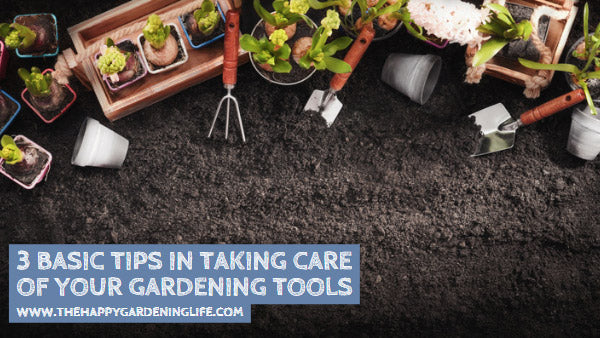
3 Basic Tips in Taking Care of Your Gardening Tools
Share
 Garden tools will become rusty and unusable over time, depending how often you use them. But with proper care and maintenance, you can maximize the use of your tools and even make them last longer than expected.
Garden tools will become rusty and unusable over time, depending how often you use them. But with proper care and maintenance, you can maximize the use of your tools and even make them last longer than expected.
Now in order to prolong their lifespan, you have to clean your garden tools every after use. If you just leave them be without cleaning, there’s a tendency for bacteria and other plant diseases to stick on them.
And when you’re about to use them again, your precious organic plants could get severely infected. This unfortunate situation can cause a garden disaster in just few days.
You can get rid of the harmful bacteria from your garden tools simply by thorough cleaning. Follow these 3 basic cleaning and maintenance tips now to keep your favorite tools in top shape!
Like this blog post? Click the social buttons to share it with your friends online!
Best Gardening Tool Maintenance Tips
Tip 1: It’s often recommended to place a bucket of sand moistened with motor oil (even used motor oil, the prescription sometimes says) inside the garage, and quickly dip tools into the abrasive, lubricating mix a few times after using them.
Tip 2: Linseed oil is likewise good for wood handles. Hang a rag near the sand bucket to give a quick wipe to wooden tool handles, too. Safety note: Do not wad up any oil-soaked rags, especially those soaked with linseed oil, or put them in an enclosed container as there is combustion risk.
Allow the rag to dry in the open between uses, and when disposing, dry thoroughly first or soak with water before placing in a closed metal can.
Another cautionary note: The boiled linseed oil that is available today has a small amount of solvent added to it to keep it from hardening in the can, so after you apply it to your metal and wood, let it dry completely before using your tool, (about 24 hours). That way the solvent will have evaporated.
Tip 3: Most important of all: Get the tools indoors, and hang them up! Don’t lean them against the garage wall, touching the floor—even if it’s paved. Again, moisture is the enemy here.
Article Source: awaytogarden.com
